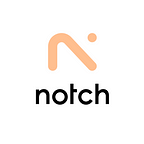Multi-vendor Procurement is Redundant & Time Consuming. We Can Fix That.
By Charlie Miner, CEO of Notch
We first conceptualized of Notch in late 2018 during conversations with a small but growing coffee franchise in Brooklyn, NY. The store development team at the brand had just been tasked with opening 25 new cafes in 2 years, and they were relying on spreadsheets, email, Dropbox and “tribal knowledge” to manage planning, design and construction of each new location.
The design and build process is complex, and procurement is time consuming, but we recognized that the repetitive nature of the tasks that make up a franchise rollout would lend well to automation by a smart software solution.
After some discovery, we learned that the process to open each store involved a standard chain of workflows among a similar group of specialized stakeholders. Without a unified system, each stakeholder was wasting hours duplicating tasks from project to project, unable to effectively share information between platforms with siloed data. This ad hoc approach had worked for the brand’s initial locations, but it was clear that it wouldn’t scale as they looked to enter a new phase of growth.
The design and build process is complex, and procurement is time consuming, but we recognized that the repetitive nature of the tasks that make up a franchise rollout would lend well to automation by a smart software solution. For businesses like this coffee company, Notch accelerates the opening of new locations by aggregating data over time, centralizing communication across teams and automating away repetitive workflows.
From the perspective of a business, this means less overhead and a faster time to open, which also means the ability to recognize revenue sooner. Additionally, because all product specifications are housed centrally in Notch as locations are opened digital records of the products in those locations are simultaneously crated. This means physical assets can be tracked more effectively for better inventory management and more efficient refurbishing or replacement of items.
Since those early conversations with the coffee franchise in 2018, we’ve worked with teams across the Hospitality, Retail and Commercial spaces to further develop Notch. Below, I’ve highlighted a few features we’ve built to facilitate better collaboration among planning and procurement teams at multi-location businesses.
As always if you’re a part of this ecosystem, I’d love to hear from you.
Be well,
Charlie
Templates
One of our main points of focus is on building tools that help teams easily replicate past projects and workflows. Notch gives users the ability to build and maintain product catalogs and to create templated projects by location “type”.
These templates include the standard items that will need to be purchased every time a team opens a new location. Once the budget is set and approved, users can dispatch orders to vendors directly through the system. Every time that location “type” is opened again in the future, the template can be repurposed in order to auto-populate the project with the appropriate pre-selected elements.
RFQ and Purchase Orders
We are always working to streamline the flow of steps needed to confirm and place an order. Digitizing the supply chain improves operations for the buyer and, ultimately, makes it easier for vendors to receive orders and get paid.
We’ve built a Request for Quote function that allows procurement teams to create and send product bids directly to vendors. Vendors can interface with Notch to confirm necessary order information like cost, product specifications and lead times. They can also attach documents, like invoices, and send notes directly back into the dashboard for review by the Procurement team.
Once a quote is confirmed and approved, a Purchase Order can be generated and automatically dispatched. Notes from team members and shipment details like carrier and tracking information are stored on the shipping dashboard.
With communication and product data housed centrally, invoices, POs and inventory can be easily “matched” in the system.
Warehouse and Installation Management
Creating a tight communication loop between the warehouse and an installation team is critical to efficiently manage onsite setup.
Items must be side marked and appropriately phased out to ensure a smooth process. By combining product data and floor plans into a single, highly visual framework, we give warehouse managers and installers a clear, interactive guide to follow for setup.
We’ve also created a simple punch list functionality that allows quality assurance teams to flag missing or broken items, drop a photo into the system, and send alerts when an item needs to be reordered or dispatched from the warehouse.
Day Two and Beyond
Once the location is open it has to be maintained. Notch allows users to create a full database of specifications on a per product basis, including warrantee information, component parts and care instructions.
This database allows for a seamless turnover from procurement and installation to maintenance teams. Onsite location managers can easily reorder, replace and refurbish items or pull from warehouse inventory to run more efficient budgets.
Data and Reporting
With project data aggregated in a central place, teams can better understand and measure critical KPIs around timelines, vendor performance and spend.
We are in the early phases of learning what types of data and reporting will be most useful for our users, and we’d love to hear your thoughts — especially if you’ve read this far.
Send us a note anytime at: team@hellonotch.com
